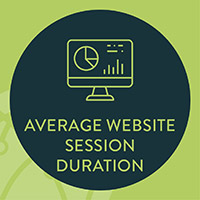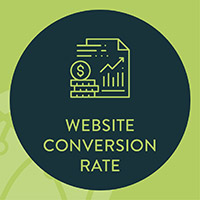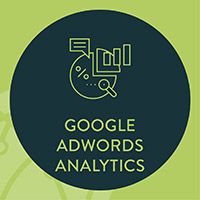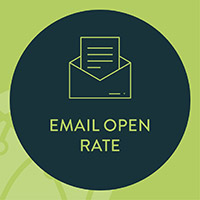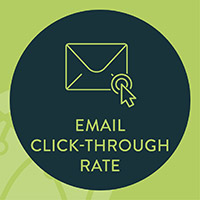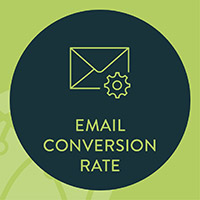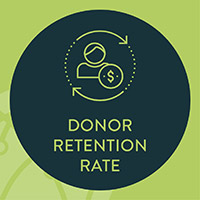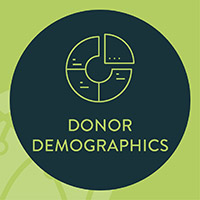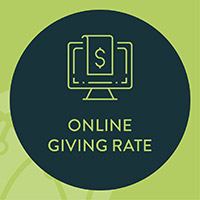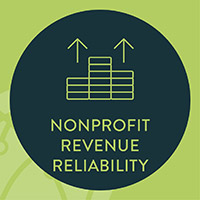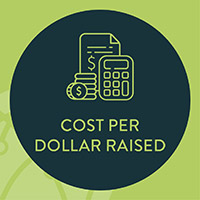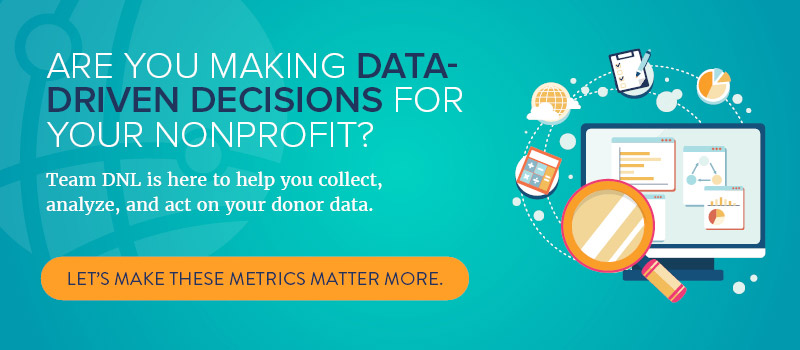
Effective data management is key to understanding your constituency and building better fundraising and engagement strategies. But before you can capitalize on the information stored in your CRM or other nonprofit software, you need to know exactly what analytics to track in the first place.
Team DNL provides Digital Nonprofit Leadership to mid-sized and large nonprofit organizations. This includes assisting with nonprofit analytics! In this guide, we’ll share some of our expertise surrounding the topic of nonprofit data analytics through the following points:
If you read through this guide and feel like you could use some assistance making the most of your nonprofit’s data, reach out to our team at DNL OmniMedia. We offer a number of analytics-related services including web analysis, strategic planning, digital measurement and testing, and data reporting and visualizations, so we can certainly assist your team.
Overview of Nonprofit Data Analytics
Definition of Data Analytics for Nonprofits
Nonprofit data analytics is the process of collecting raw data and analyzing it. The ultimate goal is to uncover trends, understand performance, and discover useful next actions to help nonprofits achieve their fundraising and donor stewardship goals.

4 Types of Data Analytics
There are four primary types of data analytics:
- Descriptive Analytics: This describes what has happened over a specific time period, helping nonprofits see which changes have occurred and compare performance across time periods. For example, you can compare this year’s year-end giving campaign to last year’s.
- Diagnostic Analytics: This helps nonprofits understand why something occurred by drawing connections between various variables. For example, you can understand what impact, if any, a new communication channel had on fundraising outcomes.
- Predictive Analytics: This is the practice of using trends from past data to anticipate future outcomes. For example, if an organization realized that its budget for a previous campaign was too low, it can predict that the budget for the next campaign, if unchanged, will also be too low.
- Prescriptive Analytics: This is the process of simulating possible outcomes, to understand the risks and benefits of different decisions.
More than likely, your organization will want to use a combination of the four types of data analytics to elevate your nonprofit’s strategies.

Why is data analytics important for nonprofits?
Data analytics is important because it allows organizations to more effectively and efficiently reach their goals. The process of analyzing a nonprofit’s data can improve a number of nonprofit functions, including:
- Recruiting and retaining supporters
- Fundraising and conducting research
- Reporting on goals and maintaining accountability
- Budgeting and forecasting for future campaigns
For nonprofits, efficiency is crucial to ensure they’re allocating as much of their financial resources to their mission as possible. Data analytics is one tool in that mission.

How To Begin Analyzing Nonprofit Data
If your organization is ready to begin analyzing your data or simply is looking to refresh your current practices, consider the following tips:
- Choose the right metrics to measure and analyze. There are virtually unlimited metrics you can track— if you can collect the data, you can analyze it. However, not all metrics will be useful for your organization’s strategy. Only analyze those that will help your organization reach its goals, and choose those by working backward from your goals. So for example, if you’re hoping to increase major gifts, focus on major gift-related metrics.
- Develop a process for collecting, tracking, and analyzing data. This includes building integrations between your various data-generating technology solutions and your CRM, so all of your data will flow into your most comprehensive database.
- Conduct data hygiene efforts to keep information clean. This includes removing duplicate entries, updating incorrect and inaccurate information, and ensuring all data is input in a standardized manner. While you may need to begin with one major “clean up,” the goal should be to develop ongoing data hygiene procedures to maintain database integrity as you add more information.
- Partner with a nonprofit consultant with expertise in data analysis. This nonprofit consulting partner will bring both data analytics expertise and an unbiased perspective through which to view your data. To learn more about these types of services, reach out to Team DNL today!
Now that we’ve covered a few tips to help your team get started, let’s discuss 13 popular nonprofit metrics that you may want to investigate in your data analysis.

Data Analytics for Nonprofits: 13 Key Nonprofit Metrics
Web Analytics
Your nonprofit website is a major source of online donations as well as other engagement opportunities, from volunteer registrations to digital advocacy actions and much more. In order to optimize your site to receive the most traffic (and conversions), pay attention to how your site is currently performing.
Consider setting up a free Google Analytics account for your site if you haven’t already so that you can easily access the most vital website metrics. Let’s break down some of the most fundamental metrics to track in Google Analytics that any nonprofit can analyze.
1. Website Traffic Sources
Do you know how people end up on your website? The answer to this question can provide insight into how you appeal to prospective donors and market your nonprofit.
The following acquisition categories on Google Analytics can help you answer this question:
- Organic traffic. These are users who land on your site through a search engine like Google or Bing. If you’re seeing low organic traffic, it’s likely because your pages aren’t ranking for key terms that individuals are searching for.
- Referral traffic. These are users who land on your site via a link on another site. This allows you to understand which external sites are driving the most traffic and what kind of users they send your way.
- Social traffic. This allows you to see which social media platforms are driving the most users to your website. You can even see which specific posts are sending the most visitors to your site.
Beyond understanding where site visitors are coming from, you can also see which pages they’re navigating to once they land on your website. That way, you can assess which pages are most popular for users who come via each traffic channel.
2. Average Website Session Duration
If users are landing on your site and immediately leaving it, that suggests that the information on your site isn’t meeting the visitor intent. However, website session duration is most valuable when it’s considered in the context of other factors, such as:
- Traffic source. Are users from Google spending more time on your website than those who found it via a recent news article? Are social media users reading the blog posts that they click through to from Facebook posts?
- Landing page. Are certain pages seeing a high bounce rate? If so, it may be time to revamp certain pieces of content or redirect older pages to more relevant, updated content.
- Keyword. Are your landing pages answering users’ search queries? If users are leaving your pages quickly, it could signal that your content isn’t relevant to their search inquiries.
Web session duration can differ drastically across different web pages. But, when you consider it in the context of these factors, you can discover where to begin optimizing your site.
3. Website Conversion Rate 
Website conversion rate describes how successfully your website turns visitors into actual supporters. With Google Analytics, you can set up a variety of goals that correspond to different user actions, such as:
- Making an online donation.
- Signing up to volunteer.
- Registering for an event.
- Signing a petition.
- Signing up for your newsletter.
- Downloading a resource.
You can break this data down even further to see which traffic sources are driving the most conversions, how many pages a user visits within their session before converting, and more.
4. Google AdWords Analytics
If your nonprofit has a Google Grant, you’re aware of the different metrics you can track as part of a successful Google Grant management strategy. Integrate your Google AdWords account with Google Analytics to see AdWords data alongside your other site analytics.
While you can learn a lot from AdWords data, we recommend starting by focusing on the following metrics:
- Clicks per campaign
- The total cost of each campaign
- Cost per click
- Percentage of visits that lead to goal conversions
- Number of pages a user visits on your site after clicking an ad
A Google Grant consulting team can help you dig into this data and make sense of it, in order to reap the greatest return on your Google Grant.

Email Analytics For Nonprofits
Email remains one of the most valuable channels for nonprofit marketing and supporter engagement. To know if your email efforts are paying off, there are a number of performance indicators that you can investigate.
Depending on the email marketing platform you use, your team may have access to a variety of analytics. We’ll walk through the most common metrics here.
5. Email Open Rate 
Email open rate describes the percentage of recipients that actually open your emails.
If you’re seeing low open rates, begin by checking your subject lines. The best subject lines are short and sweet, but still action-packed so that the recipient is excited to see what the rest of the email contains.
Additionally, consider looking into your subscriber list. If you haven’t updated your list in some time, comb through it to remove inactive email addresses or lapsed donors, as these can deflate your open rates.
6. Email Click-Through Rate 
The end game of an email marketing campaign is to get supporters to click through and engage with some other material. Email click-through rate measures the percentage of individuals who click through the links included in your emails.
To improve click-through rate, investigate the content you’re sending and pay specific attention to the calls-to-action you’re including. Segmentation can be key here, as it’s important that you only send engagement opportunities to relevant segments of your audience. For example, you wouldn’t want to send an email that encourages the reader to donate to a supporter who has just made a donation to your organization.
7. Email Conversion Rate 
To get the most accurate view of how impactful your emails are for your overall strategies, consider the email conversion rate, or the percentage of supporters who complete the desired action after reading one of your emails.
Use your email provider and Google Analytics to understand how readily email opens convert into:
- Donations
- Volunteer sign-ups
- Advocacy actions
- Event registrations
Similarly with web data, you can break this data down on a more granular level to understand which campaigns drive the most conversions. Then, you can replicate the strategies in that campaign to see continued success. And, if you’re struggling to draw useful insights from your email marketing analytics, remember that you can work with a nonprofit marketing consultant to ensure this data is put to use.

Fundraising and Donor Analytics
There are a number of donor and fundraising-related metrics that your organization can store and analyze within your nonprofit CRM or database to understand opportunities to improve your fundraising results. Depending on the capabilities of your software, you may need to add custom fields or configure your software to get the most comprehensive look at your unique data.
8. Donor Retention Rate 
Acquiring new donors is a more expensive, time-intensive process than retaining current ones. Though you should invest in discovering new prospects, it’s equally, if not more important to cultivate relationships with current constituents.
Your donor retention rate acts as evidence of how your donor engagement and stewardship strategies are performing. If your retention rates are low, ask yourself the following questions:
- How does your nonprofit prioritize ongoing supporter communications? Do you have a plan for re-engaging first-time donors after they make a gift? Do you communicate via donors’ preferred channels?
- Does your organization acknowledge donors quickly and genuinely? A thank-you email works well for small and mid-sized gifts, while phone calls are best for long-time supporters, major donors, and other key individuals.
- Do you make it easy for donors to give on a regular basis? For example, you might encourage donors to set up recurring gifts rather than one-time donations.
The longer an individual is involved with your organization, the higher their lifetime value will be. One-time donors, when stewarded effectively, can transition into making large and major gifts down the line. It’s a worthwhile investment into your organization’s future.
9. Major Gift Indicators
Certain indicators can give you powerful insight into how likely a donor is to make a major gift to your organization. This includes metrics such as:
- Wealth markers, or financial characteristics of wealth like property ownership and stock or securities holdings.
- Business affiliations, meaning where a donor works and what professional relationships they maintain. This is important for identifying opportunities to grow the donor’s impact, like if their employer offers a corporate philanthropy program.
- Giving history, meaning how much and how often an individual has given to your nonprofit and others. This can help you understand what causes motivate the donor to give.
Once you identify a donor with a high capacity to give and affinity for your organization, you can begin stewarding them using your nonprofit’s established moves management process. Using metrics to identify prospective major donors ensures that no opportunities are overlooked.
10. Donor Demographics 
Donor demographics can tell you about who your donors are and how they may prefer to engage with your organization. To start analyzing demographics, track all of the following information in your CRM:
- Age
- Occupation and employer information
- Education level and history
- Income level
- Family data (i.e. marital status, number of children in their household)
With this information, you can understand the best ways to appeal to specific donors and which opportunities they may be interested in. You can also assess demographic trends within your database and adjust your strategies accordingly.
For example, let’s say you discover a large audience of younger, college-educated donors. You may then choose to orient a fundraising campaign around raising a large number of small gifts, rather than a few major donations, to appeal to that cohort that may not yet have as much disposable income as its older counterparts.
11. Online Giving Rate 
Your organization should measure how many gifts are coming in online versus other offline channels, such as direct mail or in-person events. This is so you can invest in only the right online fundraising tools for your organization’s strategy, optimizing your investment to secure the most funds.
Remember that online giving goes beyond just an online donation form, including other channels such as:
- Mobile giving and text-to-give
- Peer-to-peer fundraising pages
- eCommerce stores
- Crowdfunding platforms
- Charity auctions
When you can see how much money you’re bringing in through each online channel, you can determine the profitability of each tool and map out a strategy that leverages the right software for your audience.

Business and Financial Analytics for Nonprofits
Even though nonprofits don’t operate the same way as for-profit businesses, it’s important to remain mindful of key business and financial metrics to ensure you’re on track for success as an organization.
The following are two ways that nonprofits can measure financial stability using data.
12. Nonprofit Revenue Reliability 
Just like a business, nonprofits need to have dependable sources of income in order to keep their lights on.
Look into your CRM to assess the status of your annual fund and measure your nonprofit’s revenue reliability year-over-year. You can pull reports on past years’ finances and use predictive analytics to find answers to important questions like:
- How much funding can you expect in the form of recurring gifts? Remember that these sustained gifts will need to be unrestricted so that you can use them for operating expenses rather than specific campaigns.
- Has your nonprofit had consistent surpluses in the past? If you’ve been inconsistently breaking even or losing money year over year, you may need to revamp your annual fundraising strategies or assess your operating budget.
- What are your key sources of annual fund income each year? Knowing where your funds come from can help you cut back on unnecessary efforts and funnel more resources toward marketing and fundraising strategies that pay off.
Once you have your budget in line, you’ll be better prepared to develop strategies for growing your annual fund so that your nonprofit can take on new campaigns, invest in powerful technology, and have an even greater impact on your community.
13. Cost Per Dollar Raised 
One of the simplest ways to calculate your organization’s return on investment is by analyzing your cost per dollar raised (CPDR).
Divide how much your fundraiser or marketing effort cost by the amount it brought in. So for example, if your direct mail appeals cost $100 to send out and resulted in donations totaling $500, your cost per dollar raised would amount to $.20 (a positive ROI!)
Knowing the exact CPDR can help you compare how different fundraising strategies pay off in the long run.
You probably have a wide variety of efforts that yield positive returns, but that doesn’t mean all of those campaigns are equally profitable. You can analyze the CPDR to determine which efforts are worth a higher investment, and which could be cut from your fundraising plan.
The main benefit of this metric is to serve as a guiding reference when analyzing your overall fundraising effectiveness. That way, you don’t end up sinking major resources into efforts that aren’t paying off.
We’ve covered a lot here, but when it comes to data, there’s always more you could be tracking to grow your organization and deepen your relationships with your supporters.
To learn more about nonprofit analytics and how you can leverage technology to get more from your data, check out these resources from Team DNL:
- The Donor Analytics Crash Course. Want to know more about donor data specifically? We’ve got your guide! Check out our walkthrough of the most important donor analytics you need to be paying attention to.
- 7 Essential Strategies for Maximizing Google AdWords Grants. If you’re not factoring your Google AdWords data into your analytics strategy, it’s time to start. Read our tips for optimizing your Google Ads to learn how to get more from AdWords analytics.
- Luminate Online Migrations: 5 Tips for a Painless Process. Migrating and maintaining your nonprofit data is key before you can dive into your analytics. We’ll teach you how to plan for your Luminate migration in this thorough post.






